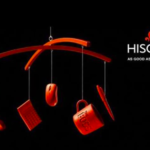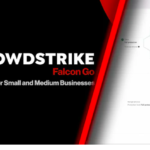Choosing the right car insurance policy is an important decision that can affect how much coverage you have and how much you pay for your premiums. There are several main types of car insurance policies to choose from, each with their own pros and cons. Factors like your budget, state laws, driving history, and type of vehicle can all impact the best policy type for your needs. This guide examines the most common car insurance policy types so you can make an informed decision on which is best for your situation.
Liability Insurance
What is Liability Insurance?
Liability insurance covers damage that you cause to others in an auto accident that is your fault. It pays for the other driver’s vehicle repairs and medical expenses for them and their passengers.
Liability insurance has two components:
- Bodily injury liability – Covers injuries to others caused by you in an accident. This coverage has a per person and per accident limit.
- Property damage liability – Covers damage you cause to someone else’s vehicle or property. This has a single accident limit.
Most states require drivers to carry a minimum level of liability insurance. Common minimums are:
- $25,000 bodily injury per person
- $50,000 bodily injury per accident
- $15,000-$25,000 property damage
However, these minimums may not provide enough protection. Many experts recommend carrying:
- $100,000 bodily injury per person
- $300,000 bodily injury per accident
- $100,000 property damage
When is Liability Insurance Best?
Liability insurance is the minimum coverage required by law. It’s best for drivers who:
- Drive an older, paid off vehicle
- Can afford repairs or replacement themselves
- Want just basic coverage
It provides essential protection to cover damage to others without a high premium cost. However, it does not pay for any repairs or replacement for your own vehicle.
Comprehensive Insurance
What is Comprehensive Insurance?
Comprehensive insurance covers damage to your vehicle that occurs from non-collision incidents. This includes:
- Theft
- Vandalism
- Flood
- Fire
- Hail
- Falling objects
- Animal collisions
It also covers broken glass damage. Unlike collision insurance, you do not have to pay a deductible if you have a comprehensive claim.
When is Comprehensive Insurance Best?
Adding comprehensive insurance is recommended if you have a newer vehicle or one with high value. It provides protection against theft and damage risks beyond accidents.
Comprehensive coverage is also required by lenders if you have an auto loan or lease. It guarantees repairs or replacement if the vehicle is damaged or stolen.
Collision Insurance
What is Collision Insurance?
Collision insurance covers repair or replacement costs when your vehicle is damaged in an accident with an object. This includes:
- Collisions with other vehicles
- Single car accidents
- Accidents involving stationary objects like guardrails, trees, buildings, etc.
Collision claims will have a deductible you must pay, often $500-$1000. The insurer then pays the remainder of the vehicle’s repair or replacement costs.
When is Collision Insurance Best?
Collision insurance is highly recommended for newer vehicles or if you still have an auto loan balance. It provides coverage for serious vehicle damage in accidents.
Without it, you would have to pay all repair costs out-of-pocket which could be very expensive. Collision insurance keeps your vehicle protected.
Uninsured/Underinsured Motorist Insurance
What is Uninsured/Underinsured Motorist Insurance?
Uninsured and underinsured motorist coverage protects you if you are hit by a driver who does not have adequate insurance.
There are two components:
- Uninsured motorist bodily injury – Covers medical costs for you and passengers if the at-fault driver has no insurance.
- Underinsured motorist bodily injury – Covers additional medical costs beyond the at-fault driver’s policy limits if those limits are not enough.
This insurance steps in to cover injuries when the at-fault driver cannot. Most states require drivers to carry this coverage.
When is Uninsured/Underinsured Motorist Insurance Best?
This coverage is critical protection given the high number of uninsured drivers on the road. It provides a safety net if you are in an accident with one of them.
Uninsured and underinsured coverage is inexpensive compared to the risks it protects against. It is recommended even if your health insurance would cover accident injuries.
Personal Injury Protection (PIP)
What is Personal Injury Protection (PIP) Insurance?
Personal injury protection (PIP) immediately pays medical expenses for injuries to you and your passengers from an accident, regardless of fault. It may also cover lost wages.
PIP acts as a form of no-fault insurance and applies your own policy to pay these benefits after an accident. It ensures fast coverage of medical costs so you can focus on recovery.
Some states require minimum PIP limits, such as $5,000 or $10,000 in coverage.
When is Personal Injury Protection (PIP) Insurance Best?
PIP insurance is primarily required in no-fault insurance states. It provides an added layer of protection for your medical costs after an accident.
PIP is also a good idea if you do not have extensive health insurance coverage. It can help pay for treatment and recovery. For most drivers, PIP is an affordable addition to complement health insurance.
Full Coverage Insurance
What is Full Coverage Insurance?
Full coverage insurance refers to a policy that combines liability, comprehensive, and collision coverages. It may also include PIP and uninsured/underinsured motorist depending on your state.
With full coverage insurance, both you and your vehicle are protected after an accident:
- Liability insurance covers damage/injuries you cause to others
- Collision insurance covers damage to your vehicle
- Comprehensive insurance covers damage from theft, vandalism, weather, etc.
When is Full Coverage Insurance Best?
Full coverage is recommended if you drive a newer vehicle that has not depreciated significantly. It provides the most protection. You pay higher premiums but avoid large out-of-pocket expenses in the event of an accident or vehicle theft.
Drivers with auto loans or leases are usually required to carry full coverage by lenders. It guarantees the vehicle can be repaired or replaced.
Factors That Affect Your Car Insurance Policy
Your individual situation will impact the best car insurance policy type for your needs. Key factors that affect your coverage include:
- Vehicle age and value – Drivers of newer, more valuable cars need more coverage like comprehensive and collision.
- Required coverages – Your state dictates minimum required insurance. Some require PIP or higher limits.
- Driving record – A clean record can qualify you for discounts on premiums.
- Claims history – Too many claims can result in higher premiums or cancellation.
- Budget – Your premium budget may limit how much coverage you can afford.
- Loan/lease requirements – Auto loans/leases usually require you to carry comprehensive and collision coverage.
Always evaluate these factors when selecting your car insurance policy. An agent can help recommend the right coverages and limits based on your unique situation.
Business Which type policy is best for car insurance?
Businesses that operate company vehicles need to evaluate their car insurance policy options as well. The best business auto insurance depends on:
- Company vehicle values – Higher value or more vehicles may need a commercial auto policy with collision/comprehensive.
- Business use – Local delivery may only need basic coverage versus long haul trucking needing comprehensive coverage.
- Employees using vehicles – More drivers means higher liability limits are needed.
- State requirements – Some states dictate business auto insurance forms or limits.
- Industry risks – Some businesses have higher accident risks requiring more coverage.
Work with a business insurance agent to review risks, fleet composition, budgets, and legal requirements to select the ideal commercial auto insurance. Make sure employees are properly covered for business driving.
Frequently Asked Questions
What is the cheapest car insurance?
The cheapest car insurance is generally minimum required liability coverage. However, this may not provide sufficient protection. Bare minimum liability limits can be as little as $10,000 bodily injury per person. Comprehensive policies cost more but are strongly recommended to properly insure your vehicle.
Is full coverage insurance required?
Full coverage insurance is generally not required by law, but often required by auto lenders if you have an outstanding loan or lease. It is also highly recommended for newer vehicles to protect your investment. The combination of liability, collision, and comprehensive provides the most protection.
How much car insurance do I need?
Most experts recommend at least:
- $100,000 bodily injury liability per person
- $300,000 bodily injury liability per accident
- $100,000 property damage liability
- $250,000-$500,000 uninsured/underinsured motorist coverage
- Collision and comprehensive coverage depending on your vehicle’s value
Higher limits provide more protection and may only cost slightly more. Meet minimum state requirements and consider your assets at risk.
Should I get rental reimbursement coverage?
Rental car reimbursement covers the cost of a rental car if your vehicle is being repaired after a covered loss. Whether you need this depends on if you have access to other transportation. If you would incur significant rental costs, having this coverage can help pay for rentals after accidents.
What insurance do I need for leased cars?
Auto leases and loans almost always require you to carry comprehensive and collision coverage. This guarantees the vehicle can be fixed or replaced. You may also need gap insurance to cover the difference between the car value and any remaining loan balance. Carefully review lease insurance requirements.
In The End
Choosing the right auto insurance involves balancing risks, coverage needs, budgets, and policy options. Take the time to evaluate your specific situation rather than just going with the minimum required. A good agent can explain policy choices and make recommendations tailored to your needs. Policies like comprehensive and collision provide peace of mind protection for your vehicle investment. Evaluate all options to make sure you select adequate coverage at the best available rate.










